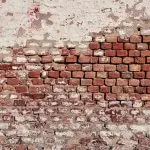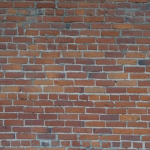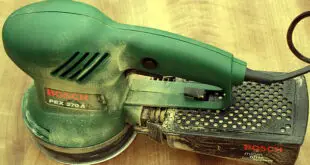There is evidence to suggest that the origins of the threaded screw date back as early as 400BCE. The concept of using a threaded bolt to bind two materials together is rather inventive; and, the argument can be made that modern construction would not be the same without it.
Ever since the 15th century, the metal bolt has been commonplace in building, and has evolved rather little over the generations. However, this lack of evolution does not mean there is a lack of variety.
There are literally dozens of different types of screws, screw sizes, and uses for screws across the board. If you have ever tried to dabble in handiwork, you have probably encountered a dizzying amount of options in the screw department. Let’s take the time to really unpack what screws can be, and what they can be used for. This should help paint a better picture for what screws you should be using for your own building projects.
We’ve covered everything you need to know about Screws in this guide, so please navigate to the section that will help with your question:
- Choosing the right screw
- Different types of drive
- Different types of thread
- Different types of tips
- Different types of coating
- Screw Sizes
- Screw Size Chart
- How to choose the right screw
- What else to consider
Choosing The Right Screw
Depending on your project, and working surface, screws are going to perform differently based on a number of factors. For example, you don’t want to use decking screws on metal, or wood screws on drywall, etc,.
Choosing the right screw for the job can be a bit of a headache if you haven’t
familiarized yourself with the options. While some packages might state their intended use on them, if you are buying screws online you may have to choose them by sight or other methods.
Let’s cover what the various types of screws you can expect to encounter.
The Various Screw Types
If you are looking at a screw from the top down, you will be able to break up the screw into different parts. These will be:
- The head: The flat top of the screw where the drill bit/screwdriver are inserted.
- The neck: The slow tapering into the main body of the screw below the head.
- The shank: The major diameter of the screw itself, not including the threading.
- The thread: The spiral threading that allows the screw itself to bite into the wood and maintain hold.
- The tip: The point of the screw.
- The Head: Which we’ll dive into more detail about below.
In addition to these major parts, you will find variations of these parts themselves. For example, the head can come in several different stylings:
- Countersunk: a flat head designed to sink below the surface of the material when fully drilled in – Examples of Countersunk Screws
- Raised: a slightly curved top head that will sit flush or slightly above the surface of the material – Examples of Raised Screws
- Domed: a well rounded top head that sits well above the surface of the material when fully drilled in – Examples of Domed Screws
- Truss: a slightly domed yet extra wide head, usually very low profile – Examples of Truss Screws
- Flange: a cross between a truss and a domed. This will provide a thin outer rim, with a thicker inner dome – Examples of Flange Screws
- Bugle: very similar to the countersunk head, but with a slightly thicker head and a curved neck rather than a straight angle – Examples of Bugle Screws
The choosing of the head will depend on your desired outcome. In many cases it can be purely aesthetic; countersunk can be covered easily, and domed are hard to hide. However, the actual design and thickness of the head is also relevant to the amount of torque required to drill the screw into the setting. A domed head will take more torque than a thinner less sturdy head shape.
The head shape will also provide varying degrees of stopping power to keep the screw
from sinking too far into the material. The heads are a way to ensure the screw does not go in further than intended; this is also a factor that should be considered.
Different Types of Drive
The drive is the part of the head where the actual force is applied for sinking the screw into the material. In essence, this is the carved out slot where the drill bit will latch on to.
There are a number of different drive types, some of which you might already be very familiar with. The most common drive types are as follows:
- Phillips – Examples Phillips Screw Drivers
- Slotted – Examples Slotted Screwdrivers
- PoziDrive – Examples PoziDrive Screwdrivers
- Torx Drive – Examples Torx Screwdrivers
- Hex Drive – Examples Hex Screwdrivers
- Hex Socket Drive – Examples Hex Socket Drive Screwdrivers
The design of the drive will be crucial to success when considering the amount of torque or force being applied to the head when driving the crew into the surface. For example, a slotted drive will be able to withstand far less torque than a phillips (cross shaped) drive.
However, a torx drive will be able to handle even more force than this.
Slotted drives are quickly becoming a thing of the past, and you will unlikely choose these unless there is a very specific reason for doing so.
Phillips drives are perhaps the most commonly faced drives in N. America, as they are designed to allow for a heavy force load, while also providing a mechanism for the bit to slip when too much force is applied. However, this slipping can cause the drive to strip and deform. This is why PoziDrive heads are most commonly used in modern construction in Europe, as they are similar to the phillips but allow for less slippage to occur.
It’s important to consider how hard the drilling surface is in order to know how much torque you will be using in order to set the screw. More torque means you need a stronger gripping surface on the drive.
Different Types of Thread
The thread itself is another area where quite a bit of variety will be found. There are two ways of classifying a thread, being ‘male’ and ‘female’ threading.
Male threading is when the thread itself is raised from the main body of the screw.
Female threading is when the threading is sunk into the screw itself. When talking about screws, it is very nearly always going to be male threading.
There are two different types of male threading that exist:
- Machined threading
- Non-machined threading
Machine threaded screws are very rarely used in DIY projects or general construction. This is because they are designed to be screwed into a custom made internal threading. This means that they need to be extremely precise in their depth, placement, and width in order to fit the specific internal threading – similar to a bottle cap.
Non-machined threads are not designed to fit into any specific pre-threaded surface, and instead can be drilled into a normal piece of wood, metal, sheetrock, etc,.
Generally speaking, non-machine threaded screws are what you are going to be using for almost anything that isn’t Pre-fabricated.
In addition to these distinctions, you will also find ‘fine’ and ‘coarse’ threading. This refers to the overall coarseness of the threads themselves. Fine threads are more suited for machined threading, or for screws being used on harder materials. Course threading is better for soft woods or timber.
You will also note that there are various types of thread design for different purposes. For example, you can find:
- Single thread: one single spiral running up the length of the screw – Examples of Single Thread Screws
- Twin thread: two separate spirals running up the screw – Examples of Twin Thread Screws
- Hi-Lo Thread: two seperate threads, one being raised higher than the other – Examples of Hi-Lo Thread Screws
- Serrated thread: the threading is serrated like a steak knife for cutting – Examples of Serrated Thread Screws
The threads themselves offer very different outcomes when broken down in performance. For example, single thread are the most commonly found as they are cheaper to manufacture.
However, twin threads provide more stability and gripping power within the surface. Hi-Lo threading provides gripping, but also less room for splitting materials that are extra brittle. Serrated threads are designed for cutting into materials as they screw in, and can be drilled faster than conventional single threads.
The choice of threading will come down to your material being used, the tools used to drive them, and how strong you need the hold to be.
Different Types of Tips
The tip of the screw, the pointy end, will also come in a selection of different options to choose from. For example:
- AB point: a very sharp point at the tip, ideal for piercing woods or metals to make the start of the drive easier
- B point: a flat tip on the screw, ideal for plastics or hardwoods where a machined internal thread has been made, or a pilot hole is present
- Super Sharp point: a needle like point that is designed for piercing extra dense materials at the start of the drive
- Thread Cutting: a notched tip that is designed to push out excess material as the screw is being drilled in. This reduces internal strain on
the material and helps cut down on splitting - Self Drilling: these are tips designed with a miniature drill bit at the tip, before the threading starts. These are for creating a pilot hole, and setting a screw all in the same process
Different Types of Screw Coating
Screws made for general use are almost always made of steel. This requires them to be coated or ‘plated’ with other metals or materials in order to preserve them over time.
The various types of coatings are vast, but here are a few of the most commonly found:
- Plain Finish coating: non-coated screws that are either made of stainless steel for anti corrosion naturally, or are simply coated in oil for longer shelf life. These are not usually used in external projects, and are designed for internal use – Examples of Stainless Steel Screws
- Corrosion Protection coating: screws which are coated in non-corrosive materials to preserve the screw for external use. This is typically a coating of zinc. Zinc plating is the cheapest and most common, but galvanized zinc coatings can also be found – Examples of Corrosion Resistant Screws
- Secondary coating: a secondary coating that is typically only done for decorative or aesthetic purposes. This can change the color or hue of the screw as the buyer pleases
Choosing the right coating will boil down to where the screw will spend its lifetime. If you are building a DIY deck chair, you likely want a zinc coated screw as it will protect against rust from moisture in the air, or rain. If your screws will be used indoors and will be exposed to far lower levels of moisture, plain finish coating screws are generally used.
Screw Sizes
Choosing the right screw for your project is about as important as the planning and
outlining of the project itself. Not all screws are created equal, and going too large or too small can damage the integrity of the project itself. Whether you are building a house, a table, or handing a fixture on the wall – you need the right screw size.
Screws will be measured in two different size charts based on your location typically.
They will either come in ‘imperial’, or ‘metric’ size measurements. If this conversion confuses you, don’t worry, it can be explained rather simply. Most manufacturers will list the imperial and metric unit of their screws on the packaging to eliminate all confusion. However, if you are buying online you might not be so lucky.
Imperial Sizes
Imperial sizing will be measured in two different measuring factors, that is the ‘gauge’ and the ‘length’. The gauge measures the diameter of the screw itself, and will ascend in numerical value the larger the diameter. For example, an 8 gauge screw will be smaller than a 14 gauge. The typical display of this measurement will be the number, followed by a ‘g’. I.e 8g, 12g, 14g, etc,.
The length of the screw is the measurement of the main body of the screw, from tip to neck. This does not include the measurement of the head – only the part of the screw that will be buried in the wood once it is screwed in. The length will be measured in imperial inches, or fractions of. For example, you might find a screw that is measured as follows:
2g 1/4” – This is a 2 gauge screw, that is 1/4th of an inch long from the neck to the tip. This is a relatively small screw, but you get the point.
Metric Sizes
In general, it is widely considered that metric sizes are easier to understand. Metric, afterall, is the standard measurement system of most of the world. However, for those who are used to reading imperial units, metric might be a bit confusing.
With metric screws, everything will be measured in millimetres – ’mm’. The ‘gauge’ from the imperial unit will instead be measured in ‘mm’, as well as the length from the neck to the tip.
This eliminates any need for memorising or understanding gauge units; you can instead understand the actual unit of measurement itself.
If you are used to metric units, there is a fun little correlation between the gauge of the screws in imperial and the size of the head in metric. The size of an imperial measured screw head will correlate to the size of the head in metric. For example, an 8g screw will have an 8mm head in diameter. This is interesting to note since you can then figure that the gauge (in mm) is exactly half the size of the head. So, a 8g screw will be roughly 4mm in diameter.
Screw Size Chart
The following table lists the screw gauge sizes next to their equivalents in inches and millimetres:
| Screw Gauge Size | Millimetres (mm) | Inches (in) |
|---|---|---|
| 0 | 1.5 | 0.060 |
| 1 | 1.9 | 0.073 |
| 2 | 2.2 | 0.086 |
| 3 | 2.5 | 0.099 |
| 4 | 2.8 | 0.112 |
| 5 | 3.2 | 0.125 |
| 6 | 3.5 | 0.138 |
| 7 | 3.8 | 0.151 |
| 8 | 4.2 | 0.164 |
| 9 | 4.5 | 0.177 |
| 10 | 4.8 | 0.190 |
| 12 | 5.5 | 0.216 |
| 14 | 6.1 | 0.242 |
| 16 | 6.8 | 0.268 |
| 18 | 7.5 | 0.294 |
| 20 | 8.1 | 0.320 |
| 24 | 9.4 | 0.372 |
How To Choose The Right Size
As mentioned above, oftentimes choosing the right screw will be a bit more complicated than simply grabbing the first box you see. You will need to think about the actual size of the screw, the composition of the screw, the manufacturing methods, and so on.
Working material aside, the actual size of the screw is important for the overall stability of the project for several reasons; namely the actual size and weight of the object they are binding together. A screw that is too small can break under a heavy weight load. In addition, screws that are too large can split the material, or protrude through it.
In general, wide screws can support more weight, but will need thicker material to anchor them in. You wouldn’t use an extra thick screw in a very thin material surface. So choosing the right thickness will depend on the weight and thickness of the material. You would want to use a thicker screw for a 2×4 plank than you would for a thin piece of plywood.
The actual length of the screw should be approximately half the length of the material it is being screwed in to at least. If you are screwing into a surface that will be 4” thick, you would want a 2” long screw (50mm). It is important to note that in most cases, the length of the screw will sort of ‘lock’ you into a thickness as well. You wouldn’t find a 2g screw that is 2in in length.
That screw would be far too brittle to be useful. On average, the longer the screw, the thicker the gauge or diameter. This will help remove one factor when trying to find your thickness – the longer you need the more likely the thickness will follow.
This is a general idea, and not a hard and fast rule.
Pilot Holes
When sizing your screws, you should also familiarize yourself with the concept of drilling a ‘pilot hole’. A pilot hole is simply a preparation process where you drill a small hole for the screw to have more room to sink into. The hole itself will always be a bit smaller in diameter than the screw itself, so the threads can still bind to the surface walls inside the hole.
Pilot holes are typically used to help thicker screws drill safely without splitting the wood or material they are being drilled into. This is because the process of drilling a screw will displace material which will create pressure that can split thinner or more rigid materials.
Removing that excess material creates less displacement and thus less pressure. In addition, for materials such as concrete or metal, pilot holes are a necessity as it is very difficult for screws to drill into those surfaces without help.
Depending on the surface, you will need to create your pilot hole a bit differently every time. The diameter of the pilot hole should be about 1/3rd the size of the diameter of the screw itself. This allows room for the threads to ‘bite’ into the surface, while also allowing the ‘shank’ to pass easily. The depth of the pilot hole can be measured roughly as follows:
- Hardwoods should be drilled the length of the screw itself
- Softwoods should be drilled 1/2 – 1/3rd the length of the screw
- Concretes should be drilled the length of the screw
When in doubt, always aim smaller than you think on the first drill. This will allow you to expand the pilot hole as needed until you find the right fit.
What Else To Consider
Choosing the right screw for your project can often appear to be more difficult of a choice than it needs to be. However, so long as you know what the screw will be used for, the choosing process can be rather simple. Just remember:
- The material being used in the project
- The weight of the material that the screw will need to support
- The thickness of the material the screw will be set in
- The moisture levels the screw will be exposed to over time
- The amount of force or torque necessary to drill the screw into the surface
- The overall aesthetic you want the final result to be
As long as you understand the workload you will be expecting the screw to carry, you
can get a general idea of which screw you should be choosing. Luckily, modern screw
packaging typically displays their intended design use for easier choosing. However, in the absence of these instructions it can be a good idea to do a bit of research as we have discussed here.
Once you have a good grasp of what different screws are used for, you can be well on your way to some fun and beautiful DIY projects in the future!
 Guides4Homeowners Useful Information & Guides
Guides4Homeowners Useful Information & Guides







